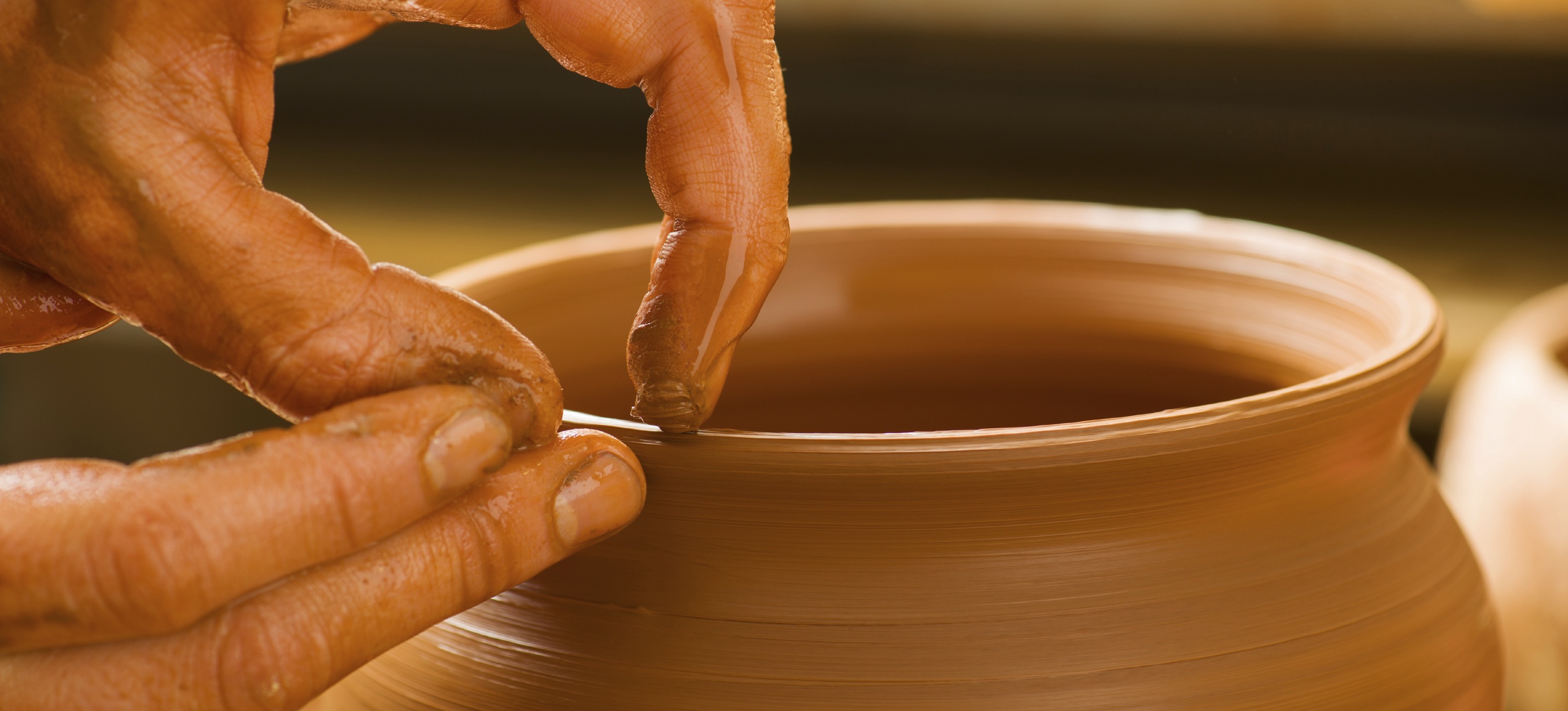Mastering The Art Of Pottery Making Simulator: Tips, Techniques, And Insights
Pottery has long been celebrated as one of humanity's oldest and most beautiful art forms, and now, thanks to technological advancements, it is being reimagined in the digital world through pottery making simulators. These simulators allow users to unleash their creativity, mold virtual clay, and design intricate ceramic masterpieces—all from the comfort of their own homes. Whether you're a seasoned potter or a curious beginner, a pottery making simulator offers an innovative way to explore this ancient craft with a modern twist.
Engaging with a pottery making simulator is more than just a pastime—it's a gateway to creativity, mindfulness, and skill-building. Simulators replicate the tactile experience of working with clay by using intuitive controls, realistic textures, and customizable features. They blend artistic expression with technology, offering endless possibilities for experimentation without the mess or cost of traditional pottery. From shaping a simple vase to crafting intricate patterns, these tools are designed to captivate users while nurturing their artistic abilities.
In this article, we'll delve deep into the world of pottery making simulators, exploring their benefits, features, and how they compare to traditional pottery. You'll learn how to master the digital wheel, discover tips for creating stunning virtual ceramics, and even uncover how simulators can serve as a stepping stone for real-world pottery. So, roll up your sleeves—virtually, of course—and let's dive into everything you need to know about pottery making simulators!
- Balanced 1700 Calorie Meal Plan For Weight Management And Optimal Health
- Timeless Beauty Of Flower Reference A Guide To Naturersquos Elegance
Table of Contents
- What is a Pottery Making Simulator?
- How Do Pottery Making Simulators Work?
- Benefits of Using a Pottery Making Simulator
- What Tools and Features Do Simulators Offer?
- Can You Learn Pottery Skills from a Simulator?
- Tips for Getting Started with a Pottery Making Simulator
- How Does Virtual Pottery Compare to Traditional Pottery?
- Common Mistakes to Avoid in Pottery Simulators
- Advanced Techniques to Master in Simulators
- Are There Any Popular Pottery Making Simulator Apps?
- Can Pottery Making Simulators Help with Mindfulness?
- How to Monetize Your Virtual Pottery Creations?
- Future Trends in Pottery Making Simulators
- FAQs
- Conclusion
What is a Pottery Making Simulator?
Pottery making simulators are digital applications or software programs that mimic the process of creating pottery. Users can shape, mold, and design virtual clay on a digital interface, often employing tools that replicate those used in real-world pottery. These simulators are popular among hobbyists, artists, and even educators, offering an immersive experience that introduces the fundamentals of pottery without requiring physical materials or equipment.
The primary goal of a pottery making simulator is to provide an accessible and engaging platform for creative expression. Whether you're using a smartphone, tablet, or computer, these simulators bring the art of pottery to your fingertips, making it easy for anyone to explore the craft at their own pace.
What Makes Pottery Making Simulators Unique?
What sets pottery making simulators apart is their ability to simulate the tactile nature of working with clay. Modern simulators incorporate advanced graphics, haptic feedback, and intuitive controls that allow users to feel as if they're working on a physical pottery wheel. Additionally, many simulators offer features such as:
- Elevate Your Wardrobe With Ropa Espantildeola Zara Style Quality And Global Appeal
- Breaking News And Updates News On 6 Tulsa
- Customizable clay textures and colors
- Virtual kilns for 'firing' pottery
- Decorative tools for glazing and adding intricate details
- Options to save, share, or even 3D print your creations
These features not only make pottery making simulators fun but also educational, helping users understand the artistic and technical aspects of pottery making.
How Do Pottery Making Simulators Work?
Pottery making simulators operate by providing a virtual canvas for users to sculpt and design pottery. Most simulators include a digital pottery wheel, which users can rotate by swiping or dragging their fingers on a touchscreen. The virtual clay responds in real-time, allowing users to shape it into bowls, vases, or other forms.
Some simulators also feature advanced capabilities like pressure sensitivity, enabling more precise control over the shaping process. Additionally, they often include tools for carving, smoothing, and decorating, giving users a comprehensive pottery-making experience.
What Technology Powers These Simulators?
Behind the scenes, pottery making simulators rely on a combination of 3D modeling, physics engines, and user interface design. These technologies work together to replicate the look and feel of real clay. Some simulators even use augmented reality (AR) or virtual reality (VR) to enhance immersion, allowing users to interact with their creations in a more lifelike manner.
Do You Need Special Equipment?
No, you don't need special equipment to use a pottery making simulator. Most simulators are designed to work on standard devices such as smartphones, tablets, or computers. However, for those interested in a more immersive experience, some simulators are compatible with VR headsets or stylus pens, which can add an extra layer of realism to the process.
Benefits of Using a Pottery Making Simulator
Pottery making simulators offer numerous benefits, ranging from creative expression to stress relief. Here are some of the key advantages:
- Accessibility: Anyone can try their hand at pottery without the need for expensive materials or studio space.
- Cost-Effective: Unlike traditional pottery, which requires clay, tools, and a kiln, simulators are a one-time investment or subscription.
- Environmentally Friendly: Virtual pottery eliminates waste, making it a sustainable alternative to traditional methods.
- Educational: Simulators teach users about the basics of pottery, including shaping, glazing, and firing.
- Stress Relief: The act of molding clay and creating art can be incredibly therapeutic.
In addition to these benefits, pottery making simulators are a great way to experiment with designs and techniques before committing to physical pottery projects. They serve as a virtual sketchpad for ceramic artists, allowing them to refine their ideas digitally.
What Tools and Features Do Simulators Offer?
Most pottery making simulators come packed with tools and features that mimic the real-world pottery experience. Here's an overview of what you can expect:
Shaping Tools
Simulators offer a variety of shaping tools, such as virtual sponges, paddles, and carving knives. These tools allow users to sculpt their creations with precision, adding unique shapes and textures.
Glazing and Decorating Options
Once your pottery piece is shaped, you can use the simulator's glazing options to add color, patterns, and finishes. Many simulators feature a palette of textures, from glossy to matte, as well as decorative tools for painting intricate designs.
Firing Simulation
Some advanced simulators include a virtual kiln, allowing users to 'fire' their pottery. This step adds realism to the process, as firing alters the texture, color, and durability of the piece.
Sharing and Exporting
Many simulators allow users to save their creations, share them on social media, or even export the designs for 3D printing. This feature is particularly appealing for artists who want to bring their virtual pottery to life.
Can You Learn Pottery Skills from a Simulator?
Yes, pottery making simulators can be an excellent learning tool for beginners. While they can't fully replicate the tactile experience of working with real clay, they do provide a solid foundation in the principles of pottery. Users can learn about:
- Basic shaping techniques
- The importance of symmetry and balance
- How to apply glazes and textures
- The firing process and its effects
For those interested in transitioning to traditional pottery, simulators can serve as a stepping stone, offering a low-risk way to practice and experiment.
Tips for Getting Started with a Pottery Making Simulator
Starting with a pottery making simulator can be both exciting and overwhelming. Here are some tips to help you get the most out of your experience:
- Choose the Right Simulator: Research and select a simulator that fits your skill level and interests.
- Experiment Freely: Don't be afraid to make mistakes—simulators are all about exploration.
- Watch Tutorials: Many simulators offer built-in tutorials or online guides to help you learn the basics.
- Practice Regularly: Like any skill, pottery improves with practice. Dedicate time to honing your craft.
- Join Online Communities: Share your creations and exchange tips with fellow enthusiasts in online forums or social media groups.
With these tips in mind, you'll be well on your way to mastering the art of virtual pottery!
- All You Need To Know About Boro Boro Meaning Impact And Beyond
- Luxury And Entertainment Redefined At Aria Resort Casino

Błotko. Pottery studio. Fournisseur GetYourGuide

Pottery making class